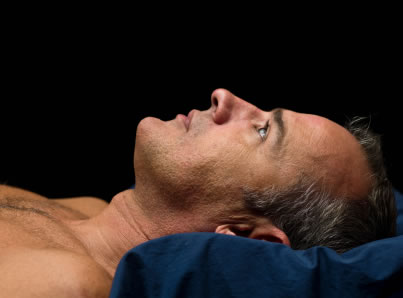 I have a brilliant friend. He is really very clever, but one thing he doesn’t do well is sleep. Well Mark, you may be interested in this new research study. Did you know that the brains of older adults with chronic sleep problems look different from those of adults who have enjoyed enough sleep. Yet the older adults function well despite their lack of sleep. They switch to a continuous form of mild stress, as a result of which they sometimes even perform better than contemporaries who enjoy a good night’s sleep according to Dutch researcher Ellemarije Altena.
I have a brilliant friend. He is really very clever, but one thing he doesn’t do well is sleep. Well Mark, you may be interested in this new research study. Did you know that the brains of older adults with chronic sleep problems look different from those of adults who have enjoyed enough sleep. Yet the older adults function well despite their lack of sleep. They switch to a continuous form of mild stress, as a result of which they sometimes even perform better than contemporaries who enjoy a good night’s sleep according to Dutch researcher Ellemarije Altena.
Ellemarije Altena investigated the causes and consequences of insomnia. She let a large group of older adults who suffer from insomnia carry out various tasks. For example, they had to press a button as soon as they saw a star on a screen, press when they saw a p on the screen but not if they saw a d, come up with as many words as possible in a certain category, for example ‘animals’, and words that start with a certain letter. Patients with a chronic lack of sleep performed better than the control group in the simplest test, i.e. the one with the star, but poorer on the task with the p and d. Yet during the third and fourth tests, when thinking of words, the insomniacs left the control group trailing: they performed the tasks better.
The researcher examined the brain activity of the study participants during the different tasks. During the word task the brain activity was lower in people with sleeping problems compared to the control group in regions important for performing the task. Their good performance despite this could be due to a state of hyperarousal. Hyperarousal is similar to a persistent mild form of stress. Your brain therefore makes use of other mechanisms to compensate for the lack of sleep. It is not known whether hyperarousal has negative side effects, although stress can lead to mental and physical problems.
Different brains
Ellemarije Altena discovered that the brains of insomnia patients not only function differently but also have a different appearance. The grey matter in certain regions of the brain has a reduced density. And the worse the insomnia, the lower the density in one of these regions, the orbitofrontal cortex. This last observation might indicate that the abnormalities in the grey matter give an increased risk of insomnia. However, the reduced density of the grey matter does not necessarily mean that the brain functions less well. In the brain, size is not the only factor that counts.
Sleep therapy
Six weeks after the initial tests, the study participants had to repeat the tasks. In the intervening period they underwent sleep therapy: for example, taking a warm bath two hours before going to bed, light therapy and lessons in sleep hygiene: not eating or watching TV in bed. After that the patients performed normally on the first two tasks (with the star and with the letters p and d). Task one took more time and task two less. However, the level of performance in tasks three and four (when thinking of words) did not return to a normal level: on the contrary, the study participants performed even better. According to Altena this could be because they were still in a state of hyperarousal. The brain activity partially recovered in the areas where reduced brain activity had previously been observed. Measurements in the longer term could demonstrate that the performance normalises as well.
Altena’s results demonstrate that patients with chronic insomnia mainly have problems with tasks that take longer and tasks that require a decision. The patients frequently face such problems in daily life. For example, they are more likely to be involved in an occupational accident. Furthermore, Altena’s research demonstrates how the functioning and brain structure of the patients differs from those of people without insomnia. This makes an earlier diagnosis and treatment possible.
Ellemarije Altena’s research is part of the sleep research of Eus van Someren at the Netherlands Institute for Neuroscience of the Royal Netherlands Academy of Arts and Sciences. In 2001, he received a Vidi and in 2008 a Vici from NWO’s Innovational Research Incentives Scheme for his research into the causes and consequences of sleeping problems. A large-scale national study into good and poor sleep in which everybody can participate (www.slaapregister.nl) has now been started.
Source: NWO (Netherlands Organization for Scientific Research)
